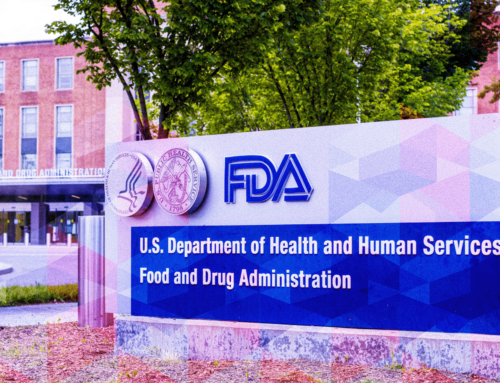By Dr. Jason Mercer, Ph. D., RAC, Strategic Regulatory Innovator
The world of cellular and gene therapy (CGT) is advancing rapidly, with new technologies offering transformative potential for patients facing serious and rare conditions. To support these innovations, the U.S. Food and Drug Administration (FDA) has released a draft guidance addressing common challenges in CGT product development. Whether you’re new to the regulatory landscape or an industry veteran, this document offers critical insights into bringing CGT products to market safely and efficiently.
Here’s a breakdown of the guidance and its implications for industry professionals.
Why This Guidance Matters for Cellular and Gene Therapy Products
Cellular and gene therapies are inherently complex, involving intricate manufacturing processes and significant safety considerations. The FDA’s draft guidance aims to streamline the development process by:
- Providing clarity on regulatory requirements.
- Offering recommendations for chemistry, manufacturing, and controls (CMC), nonclinical studies, and clinical trials.
- Encouraging early collaboration between sponsors and the FDA to address potential roadblocks.
This guidance aligns with the goals of the Prescription Drug User Fee Act (PDUFA) VII, ensuring a predictable and efficient review process for these cutting-edge therapies.
Key Takeaways for Industry Professionals
1. Engage Early with FDA
FDA provides several opportunities for sponsors to interact early in the development process:
- INTERACT Meetings: Ideal for early-stage discussions when a product concept is defined, but preclinical studies are still in progress.
- Pre-IND Meetings: Focus on preparing for Investigational New Drug (IND) submissions, including clinical trial design, CMC requirements, and regulatory strategy.
- Type D Meetings: Address narrow, specific issues requiring limited FDA input.
- Pre-BLA Meetings: Critical for finalizing data presentation and resolving major issues before submitting a Biologics License Application (BLA).
Proactive communication can save sponsors time and resources by ensuring alignment with FDA expectations.
2. Leverage Expedited Pathways
The FDA offers programs like Fast Track, Breakthrough Therapy, and Regenerative Medicine Advanced Therapy (RMAT) designations to accelerate development and review for qualifying products. Sponsors can also benefit from rolling reviews, allowing parts of a BLA to be submitted incrementally for earlier feedback.
3. Prioritize Chemistry, Manufacturing, and Controls (CMC)
CMC is a cornerstone of CGT product development. The guidance emphasizes:
- Critical Quality Attributes (CQAs): These include key product characteristics like potency, identity, and purity. Establishing CQAs early is essential for ensuring consistent product quality, especially when making manufacturing changes.
- Product Characterization vs. Release Testing: Characterization tests provide detailed product insights, while release tests ensure safety and quality before use.
- Process Validation: Sponsors must validate manufacturing processes, particularly during scale-up, to maintain quality as development progresses.
A well-documented CMC strategy can prevent delays and ensure smoother regulatory reviews.
4. Design Robust Nonclinical Studies
Nonclinical studies lay the foundation for clinical trials by demonstrating a product’s safety and activity. Key recommendations include:
- Animal Model Selection: Models should mimic the product’s intended mechanism of action and clinical use.
- Tumorigenicity and Toxicology Testing: These are critical for identifying potential safety risks before first-in-human trials.
- Proof-of-Concept (POC) Data: POC studies provide evidence of efficacy and support the transition to clinical trials.
By investing in well-designed nonclinical studies, sponsors can address safety concerns early and build a strong case for regulatory approval.
5. Craft Thoughtful Clinical Trial Designs
Clinical trials for CGT products require careful planning, particularly given the therapies’ complexity and long-lasting effects. Clinical trials for gene and cell therapy require meticulous planning to address the unique challenges posed by these advanced treatments:
- Early-Phase Trials: Focus on safety while incorporating exploratory efficacy endpoints.
- Late-Phase Trials: Sponsors must demonstrate substantial evidence of efficacy using validated endpoints. Surrogate endpoints can be used when appropriate but must be scientifically robust.
- Long-Term Safety Monitoring: For gene therapies, sponsors should plan for extended follow-up to assess delayed adverse events.
FDA encourages sponsors to align clinical trial designs with regulatory expectations, ensuring meaningful data collection to support approval.
6. Address Donor and Stability Requirements
For autologous products, labeling must clearly identify their intended use to avoid mix-ups. Donor and stability requirements are critical for ensuring the safety and efficacy of gene and cell therapies. Allogeneic products require strict donor screening and testing to ensure safety. Additionally, stability testing should support storage and shelf-life claims, particularly for commercial products.
What This Means for Cell and Gene Therapy (CGT) Developers
FDA’s draft guidance highlights a collaborative approach to CGT product development, encouraging sponsors to engage early and invest in robust CMC, nonclinical, and clinical strategies. By leveraging the agency’s expedited programs and adhering to these recommendations, innovators can navigate the regulatory landscape with greater confidence. This collaborative approach is essential for the successful development and approval of gene and cell therapies.
Next Steps for Sponsors
Facet Life Sciences is here to help! Our team of experts can guide you from concept to launch with support from industry leaders in clinical, nonclinical, and CMC regulatory, strategic statistics, and asset valuation strategy. We will help you to:
- Review Development Plans with FDA Requirements in Mind: We will review your plans and progress to provide practical recommendations and identify areas where you may need to adjust your development plans.
- Engage with FDA: We can help you plan for and schedule early meetings with FDA to address development questions and refine your strategy.
- Evaluate and Plan for CMC and Nonclinical Studies: Strong data in these areas will lay the groundwork for successful clinical trials and regulatory submissions. Our experts can help ensure that your CMC and nonclinical plans will be set up for regulatory and business success.
- Stay Agile: We will help you to interpret and adapt to feedback from FDA and plan for manageable changes in manufacturing or clinical development as your product advances.
As the CGT field evolves, this guidance provides a critical framework for translating innovative science into approved therapies. By prioritizing quality, safety, and patient outcomes, developers can pave the way for groundbreaking treatments that transform lives.
Need Guidance on FDA Submissions Process for Your CGT Product?
At Facet Life Sciences, we provide comprehensive consulting services tailored to the unique needs of small pharma companies developing CGT products.
Talk to an CGT Expert Today







Leave A Comment